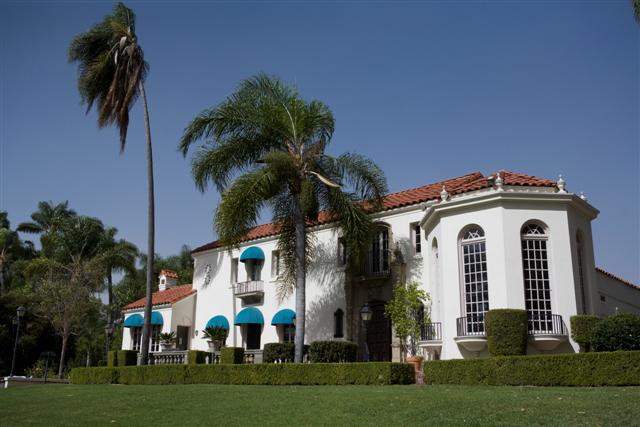
Genomic Science Transformed to Art
Muckenthaler landscape comes to life with the installation and unveiling of “Waltz of the Polypeptides” (mixed media, Mara Haseltine, 2002). The 100’ x 50’ x 15’ sculpture illustrates the birth of one of the tiniest components of life, a protein. The protein depicted is called the B Lymphyocyte Stimulator (BLyS, pronounced “bliss”), a hormone that stimulates the human body to produce infection-fighting antibodies.
The work celebrates the discovery of BLyS, a finding that may help in the treatment of AIDS, inherited and acquired immune deficiencies, rheumatoid arthritis, systemic lupus erythematosus (SLE), and B-cell leukemia lymphomas.
“Gene therapy itself is the most elegant form of treatment, using the body to heal itself,” says Mara Haseltine, the creator of the sculpture. “Waltz of the Polypeptides” uses art as a way for the viewer to understand the workings of his body simply by making it larger than life.”
Materials and methods used in fabricating the massive sculpture, are both ancient and high-tech, producing forms that are both familiar and otherworldly. Beginning Wednesday, January 8, join the artist and her team to watch the sculpture unfold and follow the installation of this beautifully important work of art.
The sculpture is intended for garden installation. “From the outset, I envisioned a natural setting for the work inspired by the Zen Gardens of Kyoto. The work has also allowed me to blend a natural environment with a wide spectrum of materials and fabrication methods that range from the very ancient to the most cutting edge.”
Working with Tustin-based CTEK Corporation (www.ctek-on-line.com) accurate rendering of the detailed structures of each of the diverse components of the sculpture were reproduced at a large scale. The actual details were transcribed from electron microscopic and nuclear magnetic resonance images. The individual components were produced using 5-axis milling and rapid prototyping.
“I happened to meet Mara when I was at CTEK, investigating ‘C2C’ a prototype automobile we want to showcase at the 2003 Muckenthaler Motor Car Festival,” said Patricia House, executive director of the Muckenthaler Cultural Center. “When she told me about ‘The Waltz,’ I was instantly intrigued and offered to have her show it on the Muckenthaler grounds. It’s such an amazing work of art, and really a very important depiction of contemporary science.
“Waltz of the Polypeptides” has its own internal narrative, as the viewer traverses the seventy-foot length of the sculpture, the birth of a protein unfolds. Forms are abstract and familiar, as the large and small subunits of the ribosome gleam and frolic down the length of the uniting structure, the messenger RNA. Each messenger RNA contains a specific sequence of nucleic acids for each protein. The ribosome subunits read the sequence and emit a nascent protein, a delicate folded structure, called a polypeptide. Standing alone at the end of the installation is an outsized sculpture of the completed protein itself. The commanding curves of this ribbon diagram formation depict the protein’s constant vibration.
Viewers are invited to attend the approximate week-long “building” of Waltz of the Polypeptides on the grounds of the Muckenthaler, beginning Wednesday, January 8, 2003. A reception on January 18 is free to the public from 12 noon – 4 p.m. The sculpture will be on display through January 20.
The Muckenthaler Cultural Center is located at 1201 West Malvern Avenue, Fullerton, California. Regular museum hours are: Tuesdays by appointment or group reservation; Wednesday – Friday 10 a.m. – 4 p.m.; Saturday and Sunday 12 noon – 4 p.m. Admission is $5 for adults; $2 for seniors and students; children 12 and under are free. For more information, visit www.muckenthaler.org or call (714) 738-6595.